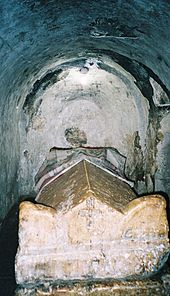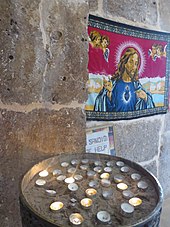
Hagia Sophia, officially the Hagia Sophia Grand Mosque, is a mosque, a former church, and a major cultural and historical site in Istanbul, Turkey. The last of three church buildings to be successively erected on the site by the Eastern Roman Empire, it was completed in 537 AD. The site was an Chalcedonian church from 360 AD to 1054, an Orthodox church following the Great Schism of 1054, and a Catholic church following the Fourth Crusade. It was reclaimed in 1261 and remained Eastern Orthodox until the fall of Constantinople in 1453. It served as a mosque until 1935, when it became a museum. In 2020, the site once again became a mosque.
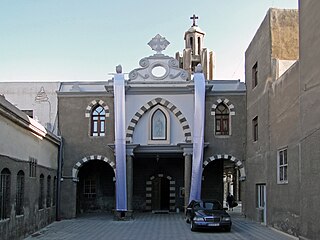
The Syriac Catholic Church is an Eastern Catholic Christian jurisdiction originating in the Levant that uses the West Syriac Rite liturgy and has many practices and rites in common with the Syriac Orthodox Church. Being one of the twenty-three Eastern Catholic Churches, the Syriac Catholic Church is a self-governed sui iuris particular church, while it is in full communion with the Holy See and with the entirety of the Roman Catholic Church.

Tur Abdin is a hilly region situated in southeast Turkey, including the eastern half of the Mardin Province, and Şırnak Province west of the Tigris, on the border with Syria and famed since Late Antiquity for its Christian monasteries on the border of the Roman Empire and the Sasanian Empire. The area is a low plateau in the Anti-Taurus Mountains stretching from Mardin in the west to the Tigris in the east and delimited by the Mesopotamian plains to the south. The Tur Abdin is populated by more than 80 villages and nearly 70 monastery buildings and was mostly Syriac Orthodox until the early 20th century. The earliest surviving Christian buildings date from the 6th century.

Nusaybin is a municipality and district of Mardin Province, Turkey. Its area is 1,079 km2, and its population is 115,586 (2022). The city is populated by Kurds of different tribal affiliation.

Saint Jacob of Nisibis, also known as Saint Jacob of Mygdonia, Saint Jacob the Great, and Saint James of Nisibis, was a hermit, a grazer and the Bishop of Nisibis until his death.

Mardin Province is a province and metropolitan municipality in Turkey. Its area is 8,780 km2, and its population is 870,374 (2022). The largest city in the province is Kızıltepe, while the capital Mardin is the second largest city.

Mardin is a city and seat of the Artuklu District of Mardin Province in Turkey. It is known for the Artuqid architecture of its old city, and for its strategic location on a rocky hill near the Tigris River.

Mor Hananyo Monastery is an important Syriac Orthodox monastery located three kilometers south east of Mardin, Turkey, in the Syriac cultural region known as Tur Abdin. Mor Hananyo Monastery was the headquarters of the Syriac Orthodox Church from c. 1160 until 1932.
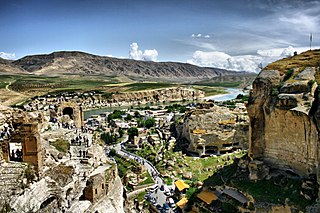
Hasankeyf is a town located along the Tigris, in the Hasankeyf District, Batman Province, Turkey. It was declared a natural conservation area by Turkey in 1981.

Selimiye Mosque, historically known as Cathedral of Saint Sophia or Ayasofya Mosque, is a former Christian cathedral converted into a mosque, located in North Nicosia. It has historically been the main mosque on the island of Cyprus. The Selimiye Mosque is housed in the largest and oldest surviving Gothic church in Cyprus possibly constructed on the site of an earlier Byzantine church.

Dara or Daras was an important East Roman fortress city in northern Mesopotamia on the border with the Sassanid Empire. Because of its great strategic importance, it featured prominently in the Roman-Persian conflicts. The former archbishopric remains a multiple Catholic titular see. Today, the village of Dara, in the Mardin Province occupies its location.
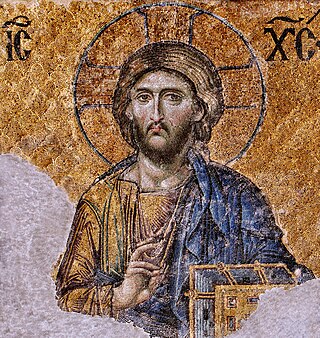
Christianity in Turkey has a long history dating back to the early origins of Christianity in Asia Minor during the 1st century AD. In modern times the percentage of Christians in Turkey has declined from 20 to 25 percent in 1914 to 3–5.5 percent in 1927, to 0.3–0.4%, roughly translating to 200,000–320,000 devotees. The percentage of Christians in Turkey fell mainly as a result of the late Ottoman genocides: the Armenian genocide, Greek genocide, and Assyrian genocide, the population exchange between Greece and Turkey, the emigration of Christians that began in the late 19th century and gained pace in the first quarter of the 20th century, and due to events such as the 1942 Varlık Vergisi tax levied on non-Muslim citizens in Turkey and the 1955 Istanbul pogrom against Greek and Armenian Christians. Exact numbers are difficult to estimate as many former Muslim converts to Christianity often hide their Christian faith for fear of familial pressure, religious discrimination, and persecution.
Ignatius John XIV bar Shay Allah was the Patriarch of Antioch, and head of the Syriac Orthodox Church from 1483 until his death in 1493.

Polycarpus Augin Aydın, is the Metropolitan and Patriarchal Vicar for the Archdiocese of the Netherlands of the Syriac Orthodox Church. The Metropolitan Seat is located at St. Ephrem the Syrian Monastery in Glane/Losser, the Netherlands.

Alahan Monastery is a complex of fifth-century buildings located in the mountains of Isauria in southern Asia Minor. Located at an altitude of 4,000 ft, it stands 3,000 ft over the Calycadnus valley and is a one-hour walking distance from the village of Geçimli. Although termed a monastery in many sources, this attribution is contested and more recent scholarship consider it to be a pilgrimage shrine. The complex played a significant role in the development of early Byzantine architecture, and practically everything known about it can be attributed to the excavations of Michael Gough.

In the period of its greatest expansion, in the tenth century, the Syriac Orthodox Church had around 20 metropolitan dioceses and a little over a hundred suffragan dioceses. By the seventeenth century, only 20 dioceses remained, reduced in the twentieth century to 10. The seat of Syriac Orthodox Patriarch of Antioch was at Mardin before the First World War, and thereafter in Deir Zaʿfaran, from 1932 in Homs, and finally from 1959 in Damascus.

The Old Bridge, also known as the Old Tigris Bridge, is a ruined four-arch bridge spanning the Tigris River in the town of Hasankeyf in Batman Province in southeastern Turkey. It was built by the Artuqid Turkmens in the mid-12th century, between about 1147 and 1167, and at the time its central arch was one of the largest in the world, if not the largest. The bridge was repaired by Ayyubid Kurdish and Aq Qoyunlu Turkmen rulers during the 14th and 15th centuries and appears to have eventually collapsed in the early or mid-17th century. The bridge's ruined piers still stand, as does one arch. Since 2020 the ruins of the bridge, along with most of the town of Hasankeyf, have been submerged underwater by the filling of the Ilısu Dam reservoir.

Tarsus Old Mosque is a mosque converted from a historic church located in Tarsus ilçe of Mersin Province, southern Turkey.
Zeynel Abiddin Mosque Complex is a historic religious building complex in Nusaybin, Mardin Province, southeastern Turkey.
Boncuklu Tarla is an archaeological site in the Southeastern Anatolia of Turkey. It is the remains of a settlement occupied from the Late Epipalaeolithic to Pre-Pottery Neolithic B periods, starting over 12,000 years ago. It was discovered in 2008 during an archaeological survey in advance of the construction of the Ilısu Dam and has been excavated by a team from Mardin Museum since 2012.



